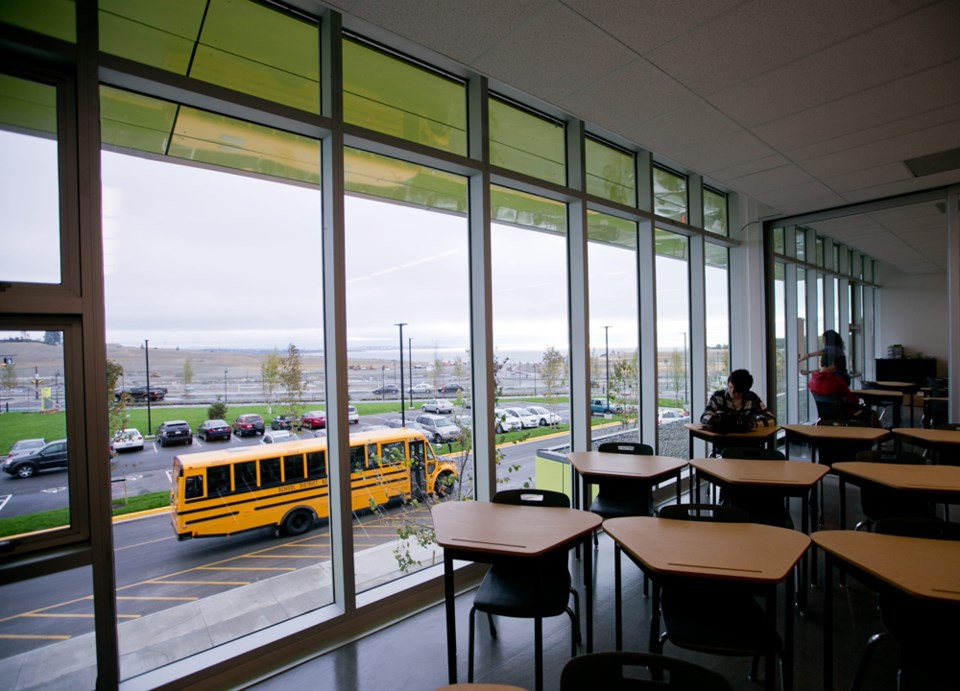With schools closed indefinitely, the switch to online learning seems like a sensible response — and it is — once the wrinkles accompanying the change are anticipated and ironed out.
To assume that schools and classrooms will just reconvene and return to “normal” after a long hiatus ignores a number of emerging issues.
What will schooling look like when the buildings finally reopen (whenever that might be) and once school district authorities have determined it is safe for children and adults to resume their lives beyond their own homes?
My own experience with closing and then reopening a small school for reasons relating to a health scare involved what happened when, in a small primary school, one child was diagnosed with necrotizing fasciitis, the so-called flesh-eating disease.
Health authorities assured us that necrotizing fasciitis is not contagious, nor is it communicable except by open cuts and wounds. The only way to get it is to become infected with the bacteria, just as you would get an infection in a cut at any other time.
We communicated this to parents by every possible means but, as the saying goes, that “didn’t make no difference.”
Naturally, many parents kept their kids at home anyway.
The entire school was closed, remaining students redistributed while an army of custodians scrubbed and sanitized every possible surface in the entire school and its playground equipment.
That was one child, one classroom, one school, and remember that this super-sanitizing of a school was because of a diagnosis of a non-contagious disease.
COVID-19 is apparently diabolically contagious and there are 1,578 public schools in B.C. in 60 school districts with a total of nearly 545,805 students, K-12.
When children do eventually return to school, parents will no doubt worry about their children being packed 20-30 at a time into classrooms that might, even after the curve has flattened, contain asymptomatic children.
Hopefully, all 60 districts will not be told, as has happened in the past, that the extraordinary costs associated with preparing the schools for reopening should come from diversion of “existing operating funds.”
And that is just the physical and financial side of things.
Educators in many jurisdictions across Canada and the U.S. are expressing concern that online education has the potential to amplify the impact of student differences, including factors associated with student background.
We already know that home environment plays a significant role on student learning and traditionally, schools have played the role of socio-economic equalizer.
But when schools are closed, home environments play a much more significant role in a child’s educational progress than when children just come to school.
The fact that students vary a great deal as learners in many aspects: academic abilities, personalities, interests, motivations and experiences can be recognized by a teacher and accommodated in a face-to face classroom situation.
These differences, less obvious when students are out of sight, can affect the usefulness of online educational programs.
Technologically, there are different combinations of online learning platforms. The delivery systems for online learning will need to be able to track which students are completing assignments successfully or not so successfully and how many students (and who, for that matter) is not logging on at all.
In some large U.S. jurisdictions, California for example, one in four students simply doesn’t participate.
Figures for Canada or B.C. are not available yet.
As would happen in “normal” school, teachers will need to be able to use online log-in data to determine who has fallen behind and then target interventions where necessary without distressing parents.
Pasi Sahlberg, former director-general at Finland’s Ministry of Education and currently professor of education policy at the University of New South Wales, cautions that during this crisis, parents should resist the temptation to overstress their children with excessive, often screen-based “remote at-home learning” in an attempt to “not fall behind.”
Finally, and given that there is no one system of online education that will fit every child, teachers and administrators, office-support staff and custodians will be left to pick up the pieces and put public education back together once the pandemic shutdown is all over.
In the meantime, a variety of ideas about what to do next are being floated out: Some educators fear that a generation of students will be forced to play catch-up, perhaps for years to come, while others are suggesting that school will extend into the summer and start earlier.
In some U.S. jurisdictions, teachers have been told not to teach new material because of concerns that lessons cannot be equitably provided to all.
None of this is to say that online education is not worth a try and is better than nothing, but, hopefully, greater minds than mine have already begun to consider some of the broader implications mentioned above.
Geoff Johnson is a former superintendent of schools.



